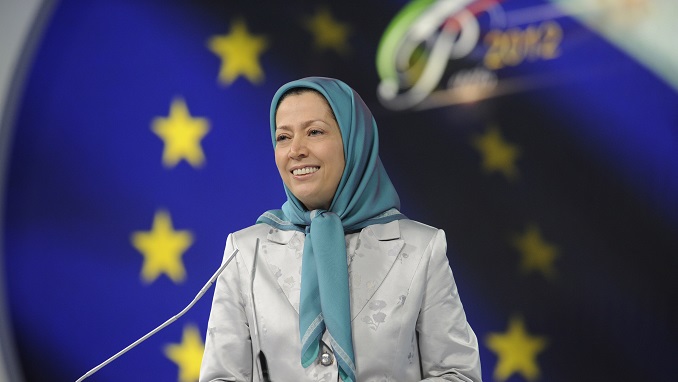
After calling for a regime change in Iran by the Secretary of State, Rex Tillerson and reviewing the policy regarding Iran by the President Donald Trump, the meeting of a delegation of the U.S. senators with the Leader of the National council of Resistance of Iran, Maryam Rajavi, is considered a great step, and shocks the mullah’s regime in Iran, Iran Freedom reports.
Hassan Mahmoudi, who is a specialist in Iran politics, wrote a piece in American thinker about how this meeting is very significant. The conventional wisdom holds that August is not usually a very busy month in politics. Most Western parliaments are on leave and most politicians take advantage of the opportunity to go on holiday.
However, this was slightly different this year. On August 12, a delegation of American senators took advantage of this August to go to Tirana and meet the No. 1 enemy of the Iranian theocracy, Maryam Rajavi, the leader of the National Council of Resistance of Iran, the mullah regime’s most significant opposition group.
The U.S. delegation was composed of Senator Roy Blunt, Senator John Cornyn and Senator Thom Tillis.
She had attended meetings with many opponents of the Iran’s regime in Tirana. Senator Roy Blunt welcomed the transfer of these opponents from Baghdad to Tirana which took place in September 2016 and stressed that this relocation was a victory for the Iranian opposition. During the meeting, Rajavi described the agonizing situation of the religious dictatorship in Iran, emphasizing that despite the efforts of the regime’s lobbies in the Western capitals, the latter is crumbling and a change of power is quite near. Contrary to the propaganda of these lobbies, the downfall of this dictatorship will bring peace and stability in the Middle East, the patroness of the most important coalition of Iran’s opposition affirmed.
Rajavi also stressed the importance of excluding the Iranian Revolutionary Guards from combat scenes in Syria, Iraq and Yemen, as well as prosecuting the leaders and perpetrators of the massacres of Iranian political prisoners in 1988. Many of these leaders are in high decision-making positions in Tehran.
Last April, Senator John McCain also traveled to Tirana to meet with Iranian opponents and their leader, Maryam Rajavi. The leader of the Senate Armed Service Committee is, as we know, one of the most influential politicians in Middle Eastern politics in the United States. The message of this parade of U.S. politicians of great influence in Tirana to meet the charismatic leader of the Iranian opposition signals that one must take seriously the warnings of the Trump administration in its change of U.S. policy with respect to Iran.
Last June, Secretary of State Rex Tillerson called for a regime change in Iran. The first American diplomat announced that his administration was “working to support elements inside Iran that would lead to a peaceful transition of this government,” he said. “These elements are there, certainly as we know,” he added.
These meetings of American officials with opposition leaders have not been common since the emergence of the Islamic Republic. The various U.S. administrations that have followed have tried to expand the dialogue with the leaders of Tehran. So this is a change in the balance of power in Iran itself. In May, the People’s Mojahedin Networks in Iran defeated the Supreme Leader’s tricky campaign to bring his close collaborator, Ebrahim Raisi, to the post of President of the Republic. A large movement in favor of justice for the victims of the massacres of 1988 was mobilized by these networks to prevent this shaman from succeeding. This was one of the manifestations of these “elements inside Iran” that Tillerson spoke of. This change is also perceived in Tehran, which is now crying conspiracy in the face of this news. Could a tsunami be on the march?
